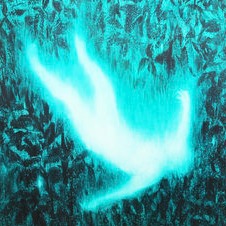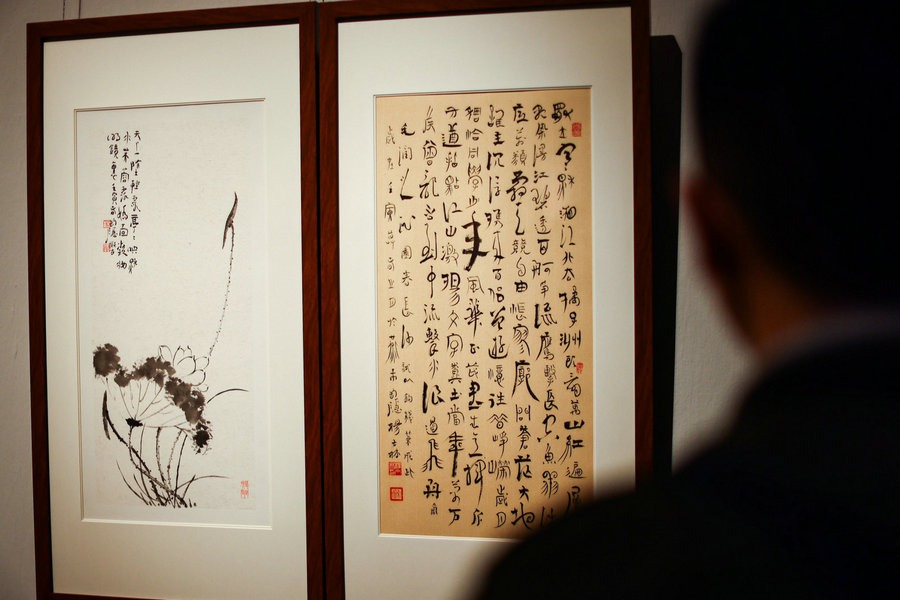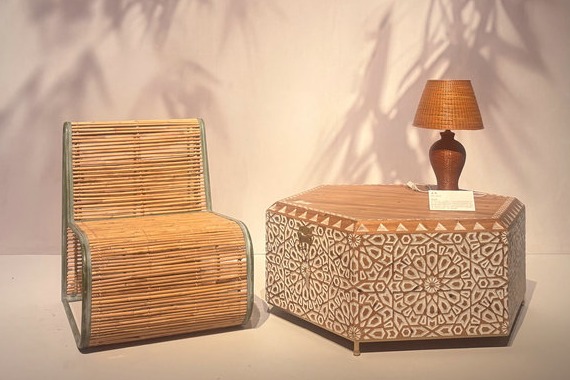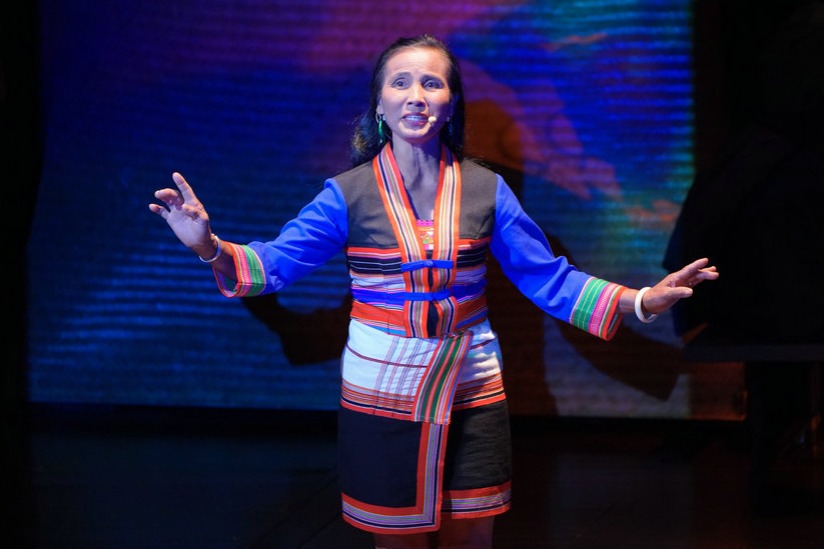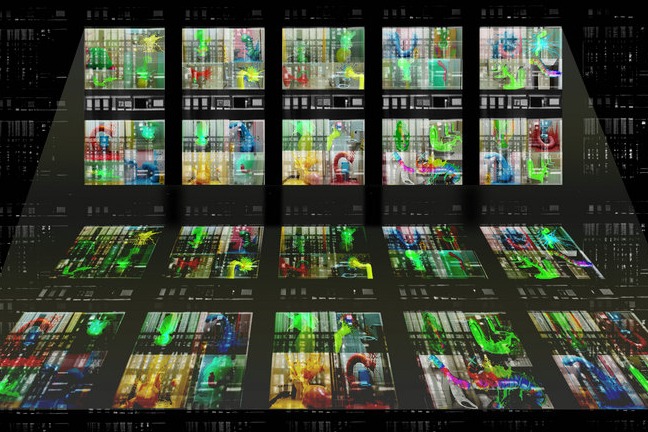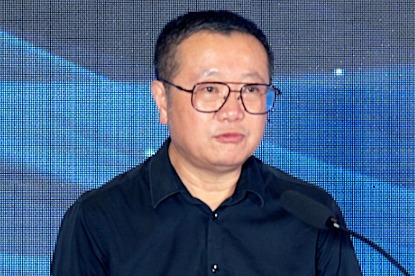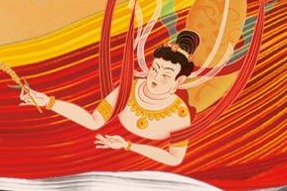'Do Your Own Thing': The art of painting between restraint and universality
An Interview with Marcel Duchamp Prize Nominee Xie Lei

October light in Paris always carries a certain ambiguity. The afternoon sun slides across the thick stone walls along the Seine, reflecting off the glass facade of the Musée d'Art Moderne de Paris. It's Sunday, Oct 5, 2025, an early autumn day with gentle sunshine and a slight chill in the air. This is the venue for the joint exhibition of the four nominated artists for the Marcel Duchamp Prize. Eight oil paintings created by one of the nominees, Xie Lei, specifically for this space, hang quietly, awaiting dialogue with every visitor who pauses.
The reporter arrived early, hoping to observe the details of Xie's work, especially his painting techniques, to ask more insightful questions during the interview. Upon entering, the reporter unexpectedly saw Xie, who was touring the exhibition with an elderly couple. The couple was his parents, who had just flown in from Beijing that morning. At the reporter's invitation, Xie warmly embraced his parents for a photo in front of several monumental oil paintings, each 2.7 meters high and 2.05 meters wide.
Afterward, his parents continued their visit, and the interview with Xie took place on a bench next to the entrance hall of the museum.
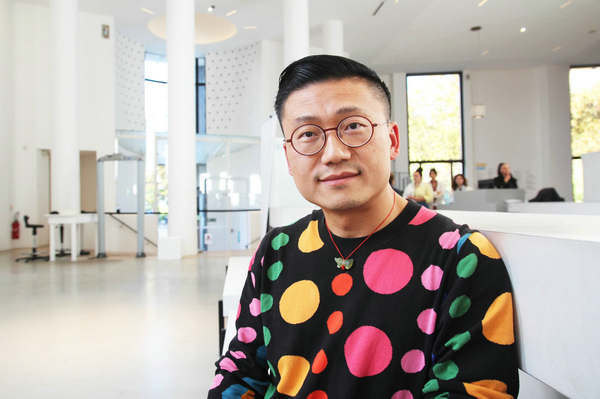
Marcel Duchamp Prize nomination: An unexpected opportunity
When asked about his Marcel Duchamp Prize nomination, Xie admitted it was "quite a surprise". The award targets artists active in France, and the four nominees each year are given the chance to exhibit in a prominent museum for several months. His eight paintings for this exhibition were created specifically "for this exhibition space".
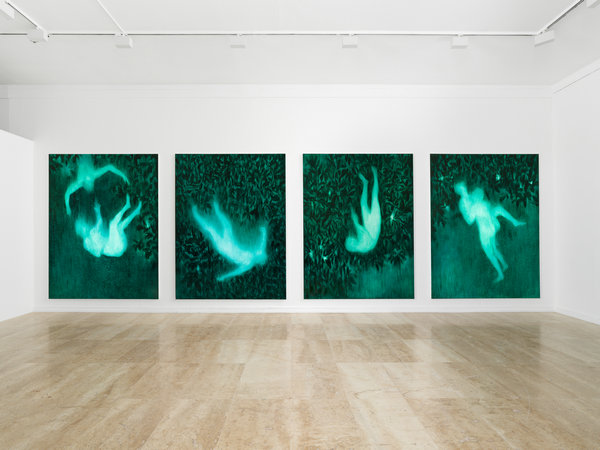
Regarding the concept behind the exhibition, Xie shared his working method. He has always been fascinated by the "feeling of falling", both "culturally and psychologically". He keeps a large collection of ideas and records in a "drawer of thoughts, like a menu that one can select or filter, and then see if it relates to the space, sometimes not very logical." This nine-month creation process eventually culminated in his presentation at the Marcel Duchamp Prize nominee exhibition.
On closer inspection of his works, the reporter noticed that the paintings did not use luminous materials; the fluorescent effect was created by layering green paint over a white base. Xie explained that this method of representing light had gradually developed over more than a decade. He has always been interested in "that light quality, like a screen, or projected onto an object, the feeling one gets when watching a movie", and he attempts to express it through painting.
Xie does not regard his painting as "figurative" or "realist", preferring to call it "representative". He believes, "It's enough that people can tell what the painting is of." His images, having undergone multiple layers, have become "images inside the mind, very personal". He hopes his works can resonate on a deeper level that "transcends culture and region".
As for the artistic value of his work, Xie believes that "painting itself will answer better". If his work can remain in art history, "and change some people's ideas, ways of thinking, a way of looking at things, that would be wonderful". He emphasizes that the key to an artist's success is not in "breakthroughs in artistic technique", but on a "spiritual level". While his paintings include personal memories, Xie seeks an expression that is "as universal as possible". He enjoys the contradiction between the personal and the universal, "Everyone dreams, everyone has life experiences, and these are the universal things".
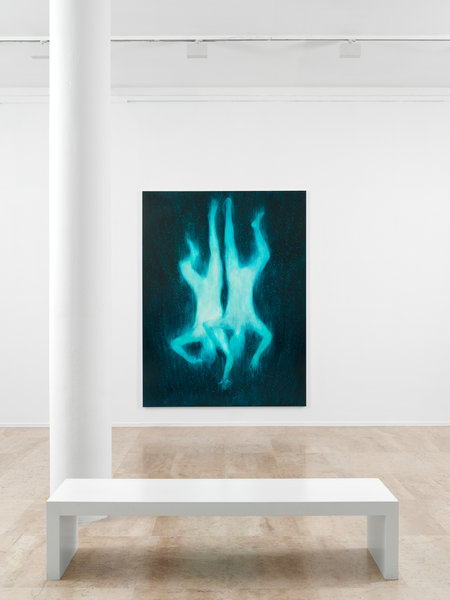
Color and restraint: The philosophy of subtraction in challenge
When discussing his use of color, Xie describes his style as "sparing and very restrained". He believes this approach "presents a certain challenge, including some risks". He mentioned the French word "camaïeu", which he finds fascinating. The word, full of contradictions, "feels like one color, but it's actually many colors within one degree of shade, not just a gradient". For the past decade, he has "basically not used black, and white has been used less and less; it's mostly the white of the primer coating showing through". He summarizes his creative approach as "doing addition with subtraction".
Drawing inspiration from Chinese culture, he references Zhuangzi, a pivotal figure of classical Taoism in the third and fourth centuries BC, and Qing Dynasty (1644-1911) writer Pu Songling, believing that they contain vivid colors and imagery. "It's not a simple translation, but through my thoughts and some imagination, I translate it into my work," he said, resulting in "personal" colors such as "cyan-green", "blue-purple" and "dark white".
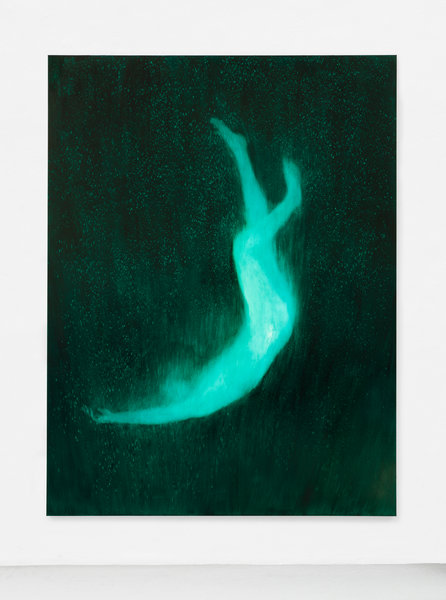
École Nationale Supérieure des Beaux-Arts de Paris and self-discovery: "Do Your Own Thing"
Xie recalled his experience of being admitted to the École Nationale Supérieure des Beaux-Arts de Paris at age 23, a dream he had nurtured since attending the Affiliated High School of the Central Academy of Fine Arts in Beijing. To achieve this, he studied French for many years at the Alliance Française in Beijing. At the end of the final entrance exam in Paris, the young Xie chose Sylvie Fanchon's studio for his future studies, as he "was aiming for something very abstract" at the time, hoping to compensate for the lack of systematic study of abstract concepts in his Chinese education.
However, a year after starting, Xie began to feel lost, "not knowing how to proceed". By 2007, he had started a new series of paintings, "almost between abstract and figurative", marking the beginning of a shift in his work. In the brightly lit window-side location on the top floor of the Atelier P2F, one of his mentors, Bernard Piffaretti, half-jokingly told him, "I don't understand. You wanted to study abstract art and explore that further, but now you've started shifting toward the figurative".
As Xie felt shy and unsure, unable to ask about changing studios, his motherly mentor, Sylvie Fanchon, noticed his internal struggle. "She is an open-minded mentor, and as a professor and artist, she is very rigorous," Xie said. Sylvie Fanchon proactively encouraged him, saying, "I can feel you want to change studios. Whose studio do you want to switch to? I'll introduce you". More importantly, she told him, "Do your own thing"; Xie added, "This sentence will stay with me for the rest of my life."
Transitioning from an art student to a professional painter, Xie reflected on three key stages: deciding to stay in Paris, pursuing his doctorate, and collaborating with his first gallery.
"I almost went to Amsterdam for a residency after graduation, but my application wasn't accepted. This kind of setback can greatly change a person's life. Because of that, I decided at the time that I had to stay in Paris".
His doctoral program, which ran from September or October 2012 to April 2016, marked another crucial phase. This practice-based research project, which explored a theme over three to four years, led to significant self-reflection. "I was quite single-minded at the time; my work was always like that, and then suddenly I realized something was wrong, that I had gone down a wrong path; it wasn't about interpreting the topic through the images or the plan itself, but taking it a little further and wider." The title of his doctoral research was Between Dog and Wolf: The Poetics of the Strange for a Painter Today, which was the first practice-based doctorate at the École Nationale Supérieure des Beaux-Arts de Paris. Xie ’s painting practice reflects reality while questioning the ambiguity and opposition concealed within it. This exploration of Between dog and wolf draws from Chinese culture and philosophy. In his graduation exhibition, in addition to forty paintings, Xie also presented his research findings in the form of an installation, where visitors could view and flip through two volumes of a "portfolio", an important part of his thesis.
Regarding the third key stage of his career, Xie emphasized, "I am very grateful, not out of politeness, but from the bottom of my heart." This reflects his collaboration with his first representing gallery, Galerie Anne de Villepoix. They met during the school's studio open day in 2008 and worked together for 12 years. However, around 2018, Xie chose to leave the gallery because "the direction of each party was different”. In 2021, he invited gallerist Anne over for dinner. "Parting amicably", "like a kind of divorce," he recalled. "It was the first time Anne had dinner at my house, after we had collaborated for over ten years." This dinner marked the end of one collaboration and the beginning of another. Since then, Xie has been collaborating with his current gallery, Semiose. He believes that having a good team is crucial, "I completely delegate all the work to them, and then I do mine, allowing me to concentrate in the studio."
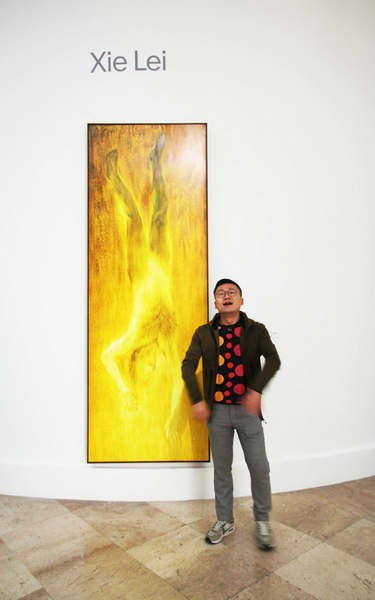
From Huainan to Paris: A proactive choice
Xie was born in Huainan, Anhui province. When he was 12, due to his parents' work transfer, he was sent to Suixi county's Chengguan No 1 Middle School in Huaibei, where he lived alone for three years. His parents worked in the coal mine, with his father managing the "underground ventilation system", a role that required a strong sense of responsibility.
When discussing his decision to pursue painting, Xie believes it was "destined". He began learning to paint at the age of five or six. "I just loved it, I could sit all day, and suddenly become very quiet." Upon graduating from junior high school, he made an important agreement with his parents: "I'll take the exam for the key high school, and if I pass, my parents will let me go to Beijing to take the exam for the Affiliated Art High School!"
At 15, Xie took the joint entrance exam for the Affiliated High School of the Central Academy of Fine Arts in Beijing, accompanied by his mother, but he "didn't even pass the preliminary examination". After returning, he took the regular high school entrance exam. Once admitted to the local high school, he discussed his aspirations with his parents, expressing his heartfelt wish: "I'd rather go to the pre-exam class for the Affiliated High School of the Central Academy of Fine Arts." At that time, supporting this pre-exam class in Beijing meant considerable financial strain for his parents, who worked in the coal mine. Xie recalls feeling "especially stressed". Ultimately, his parents agreed to his decision, and he spent a year at Xiangshan Mountain (or the Fragrant Hills) preparing seriously. The following year, he "naturally passed the exam".
The Xie Lei today looks different from the one who graduated from the École Nationale Supérieure des Beaux-Arts de Paris in 2010, when he wore a topknot and a silver bracelet. Smiling, he said, "I suddenly felt I had never had long hair, so why not?” The small jade pig necklace he wears today has had been with him since birth, and he has "worn it for 42 years", representing his attitude toward things, that he is "single-minded, and simple things he will wear for a lifetime".
Regarding the upcoming Marcel Duchamp Prize, which will be announced in late October, Xie appeared very calm, "I'm not nervous, my task is complete, I've done my part." Whether he wins or not, his response remains focused: "I will still go to the studio and continue painting."
The interview lasted one hour and fifty minutes, and as the museum prepared to close, Xie said his goodbyes, and immediately called his parents. On the museum steps, amidst the bustling crowd, he anxiously and intently searched for his parents, completely unaware of the reporter passing by.
About Xie Lei
Born in Huainan, Anhui, China, in 1983, Xie graduated from the Central Academy of Fine Arts in Beijing and the École Nationale Supérieure des Beaux-Arts de Paris (ENSBA). He has been living and working in Paris since 2006.
His work has been exhibited in numerous prestigious institutions and is held in various public and private collections. He was an artist-in-residence at the Casa de Velázquez in Madrid from 2020 to 2021 and a resident artist at Villa Médicis in 2024.
In 2025, he was named as one of the four nominated artists for the Marcel Duchamp Prize, which is one of the key reference awards in the contemporary art world. Established by Association pour la Diffusion Internationale de l’Art Français (ADIAF) in 2000, the award has honored many artists who have become significant figures in the international art scene. The exhibition of the four nominated artists is being held at the Musée d'Art Moderne de Paris from Sept 26, 2025, to Feb 22, 2026. The winner will be announced at a ceremony on Oct 23, 2025, selected by an international jury composed of heads of art institutions, collectors and artists.
Luo Ping is a Paris-based artist and art critic. With an academic background in contemporary art history at the École du Louvre, in art at Université Paris 1 Panthéon-Sorbonne, and in literature, she works primarily in oil painting and engages in dialogue with artists and figures in the art world through interviews and writing.She can be contacted at pingluo.art@gmail.com.


